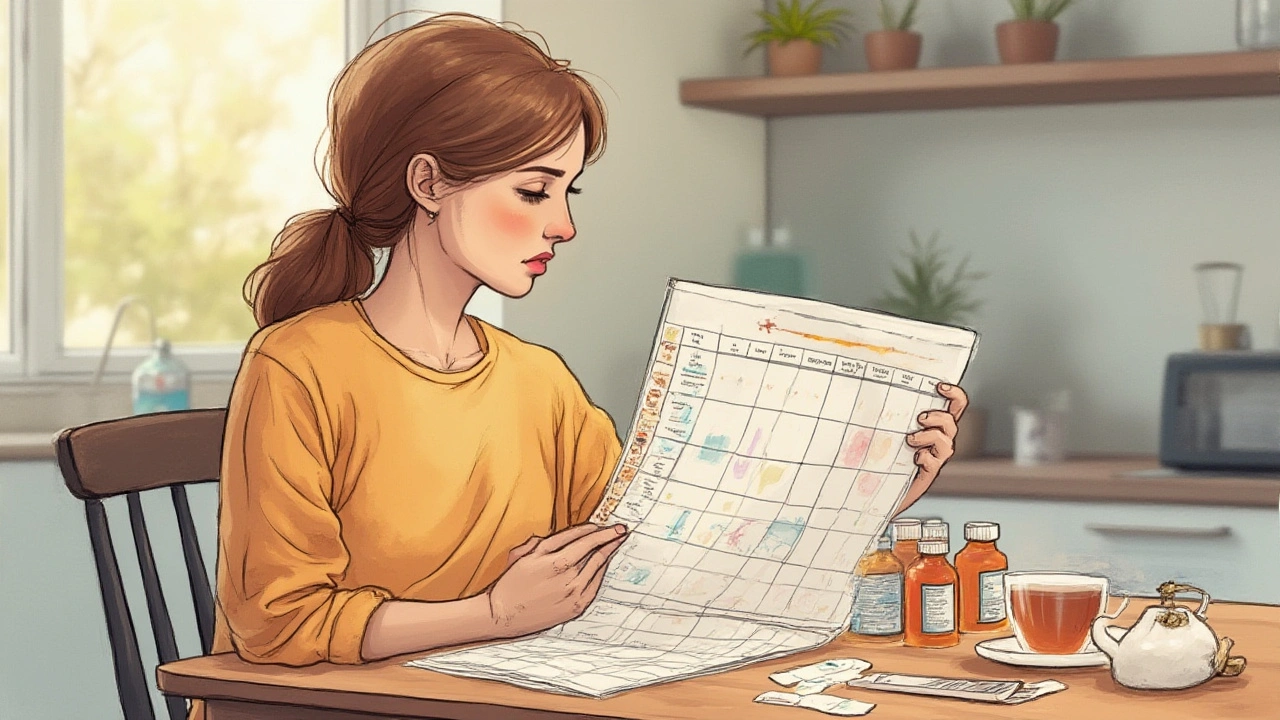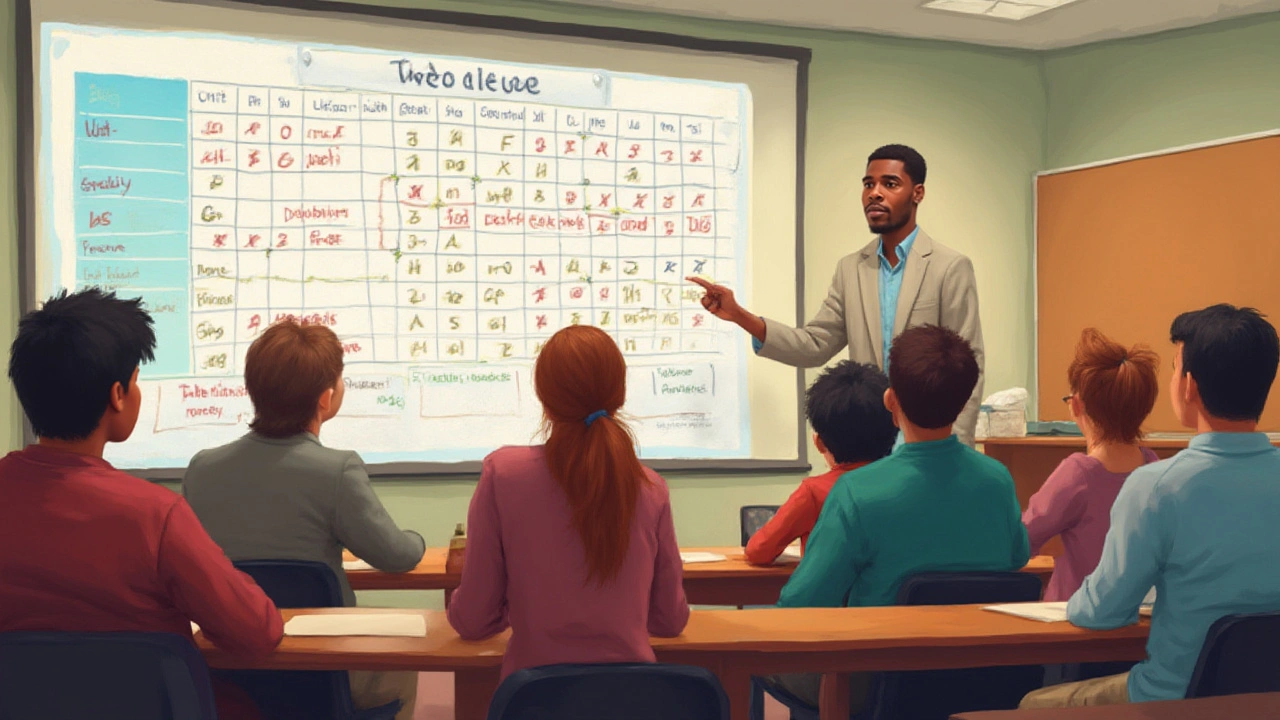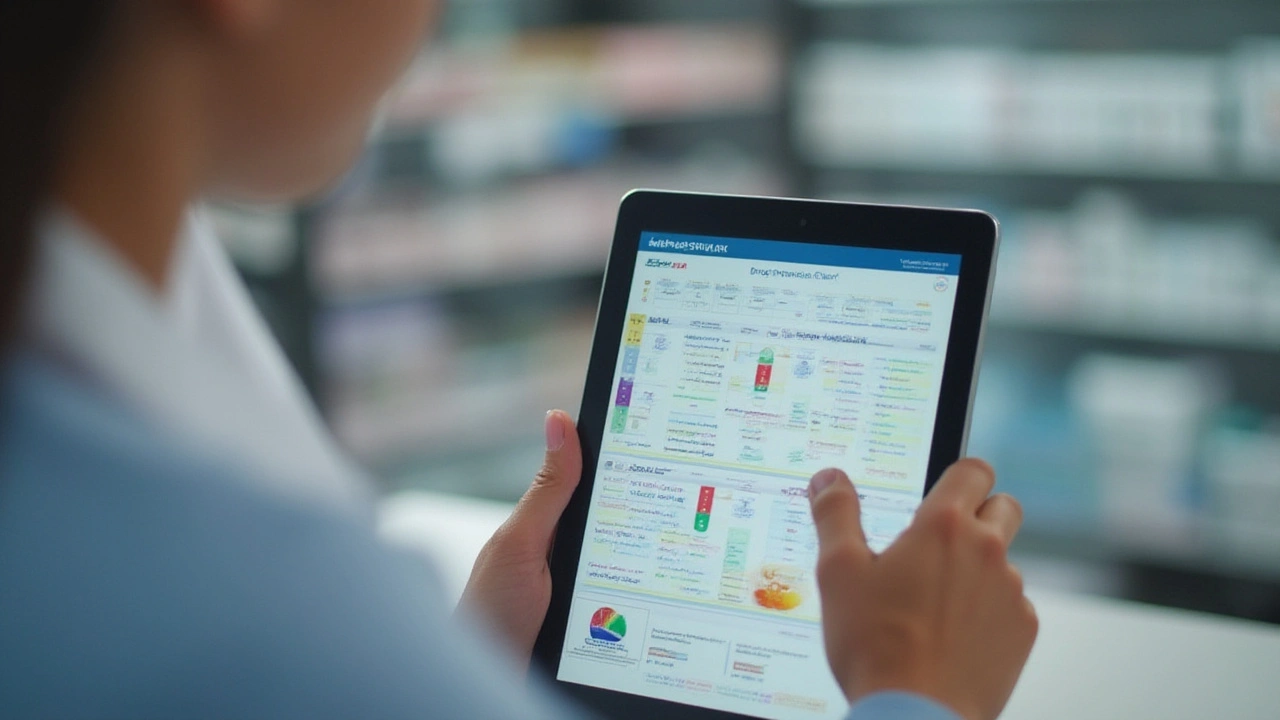If you’ve ever picked up two or more prescriptions and wondered whether you can take them together, you’re not alone. Medication mix-ups land hundreds of thousands in U.S. emergency rooms each year. Yet, the problem usually boils down to something shockingly simple: understanding how drugs interact. A drug interaction chart isn’t meant to be rocket science, but honestly, the codes, categories, and rainbow of boxes can look like hieroglyphics if you don’t know how to decode them. Want to avoid the “Check with your doctor” panic? Keep reading.
What is a Drug Interaction Chart (and Why Should You Care)?
Let’s be blunt. Most folks only glance at those pamphlets in a prescription bag—or ignore them altogether. But drug interaction charts are like traffic signal maps for your medicines. They tell you what happens if you mix two (or more) drugs, from harmless to downright dangerous. The chart itself is usually a grid—one axis lists drug names, the other axis does too, then the colored cells or symbols at the intersection tell you the story. Why does this matter? Because drug interactions can lead to anything from mild dizziness to heart failure, just depending on what you take. It’s not just about prescription drugs, either—supplements, herbs, and over-the-counter stuff can join the drama. Statistically, nearly 30% of adults in the U.S. have taken five or more drugs at the same time. The chances for weird reactions go up sharply with every new pill. In fact, the infamous antihistamine-terfenadine got yanked from shelves in the ‘90s after several deaths—it interacted with a common antibiotic in a way nobody expected. One more stat for you: the FDA tracks over 5,000 active drug interactions right now. So yeah—a chart isn’t just paperwork, it's your safety net.
Parts of a Drug Interaction Chart Explained
The first time you stare at a drug interaction chart, it’s intimidating. The rows and columns usually list drugs alphabetically or by class. Picture a multiplication table from third grade—drug A across the top, drug B down the side, like a massive bingo card. Where two drugs meet, you’ll see either a color, letter, symbol, or word. The legend (or key) is your best friend here—it tells you what the codes mean. Common colors: green (safe), yellow (caution), red (dangerous). Sometimes you get abbreviations—‘M’ for major, ‘Mo’ for moderate, ‘Mi’ for minor. Some charts skip colors and just use words like “Avoid,” “Monitor,” “No Interaction.”
Another thing: some charts show not just if there’s a reaction, but what kind—like whether it raises toxicity, lowers effectiveness, or triggers weird side effects. If you’re using an app or digital tool (like Drugs.com or Epocrates), you get extras like alerts and links to more info. Something else to watch for—time of interaction. Some drugs only mess with each other if you take them close together. Others can linger in your system and become a problem days apart. That’s why reading every part of the chart really matters. They might even include tables showing typical reaction rates or which organs are at risk (think liver or kidneys). Screenshot-worthy tip: If you take more than two drugs, always cross-check every pair and, for good measure, mention each to your doctor.

How to Use a Drug Interaction Chart Effectively
Start with your complete list of medications—prescription, over-the-counter, vitamins, supplements, everything. On a physical chart, find your first drug on the X-axis (top row) and your second drug on the Y-axis (side column). Trace your fingers down and across to see where they meet. Pay attention to the color or the symbol. Here’s a little pro move—a lot of people stop at ‘no major interaction,’ but don’t skip the legend. Sometimes, what looks like ‘safe’ actually means ‘not studied enough to know.’ In digital charts, you usually type your drugs in, and the site kicks back a list of risks. But don’t take digital alerts lightly—even a “mild” interaction can matter if you’re old, sick, or on a lot of medicines.
Breathe, you don’t need to memorize every possibility. But if you see a red flag (literally), don’t panic—double-check with your pharmacist before acting. Print or screenshot the key part of the chart and bring it to your next checkup. Even in 2025, not every doctor’s electronic record catches all interactions, especially with herbal stuff like St. John’s Wort or ginseng. Here’s a tip: create your own mini-chart at home, listing the drugs you take and notes about “watch out for X” interactions. This can help in emergencies or if you see a new doctor. And a surprise fact: some drugs only interact with certain foods. Grapefruit juice, for example, messes with over 85 medications according to the FDA. If you see a food icon or extra row on your chart, don’t skip it. Always check the fine print.
Common Pitfalls and Misconceptions
A lot of people assume more is better—two painkillers will double the relief, right? Not so fast. Sometimes combining drugs just means double the side effects or major organ stress. About 16% of ER visits for older adults are caused by drug interactions. And it’s not just obvious combos like blood thinners and anti-inflammatories. For example, combining certain antidepressants (SSRIs) and migraine medicines (triptans) can set off serotonin syndrome, which is rare but scary (think fever, confusion, tremors). Folks often believe herbal stuff is ‘natural, so it’s safe,’ but green tea and ginkgo biloba can mess with heart medications badly. Timing trips folks up too—for instance, spacing antibiotics and antacids by a couple hours avoids absorption problems. Many charts will note these specifics in the cells or footnotes.
Don’t confuse ‘no documented interaction’ with ‘no chance of interaction.’ If a chart says ‘monitor,’ assume you might get delayed reactions—like blood pressure rising a week in. Doctors see things like this all the time. Self-adjusting doses based on a chart alone? Not smart. Sometimes stopping a drug suddenly can create interactions, too—like suddenly quitting steroids. Pay attention to the footnotes—they sometimes say “dose adjustment may be needed” or “requires frequent lab tests.” Here’s another important pitfall: not updating your med list. Every time you start something new—even a probiotic—check the chart again. Better safe than unloading your whole story on the ER doc at 2 AM.

Reading Charts in the Real World: Practical Tips & Extra Resources
If you have a chronic condition, you’ll want to keep tabs on updates. Drug interaction charts get revised as new studies come in. Big names like the FDA, Mayo Clinic, and pharmacy apps update monthly or even weekly. Print charts are good for an overview, but if you can, rely on an up-to-date app—you’ll catch hazards faster. Here’s a little table of common interaction chart symbols and what they mean, because who wants to memorize another key?
| Symbol/Color | Meaning | What To Do |
|---|---|---|
| Green/OK | No Interaction | Safe to combine |
| Yellow/C | Caution | Monitor side effects, possible mild issues |
| Red/X | Danger | Avoid combo or get doctor advice urgently |
| M | Major | Severe interaction, serious risk |
| Mo | Moderate | Potential for moderate problems, need closer monitoring |
| Mi | Minor | Slight risk, usually not serious |
Here are a few quick tips to keep your meds in check:
- Double-check every new prescription or supplement—even if you’ve checked before.
- Always share your current med list with every health professional—including dentists and urgent care clinics.
- Don’t trust only packaging. Chart codes are more reliable than memory or guesswork.
- When in doubt, call your pharmacist—they see this every day and stay updated.
- If you’re managing meds for someone else (like an older parent), use a chart and recheck before each doctor visit.
Some over-the-counter drugs most likely to interact, according to a recent survey in 2024, include non-steroidal anti-inflammatory drugs (NSAIDs) like ibuprofen, antihistamines, and decongestants. The *drug interaction chart* is your first line of defense, but your brain and your pharmacist are just as important as any graph or grid. Stay curious, keep your records tight, and let the colors and codes work for you.

